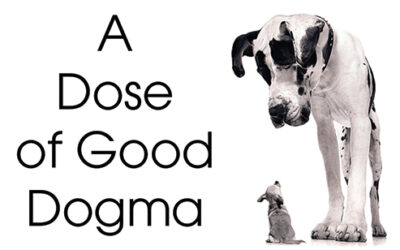By Lisa Ellman
Reconditioning behavior is a type of “retraining”. If your dog reacts badly to a doorbell or people or other dogs, reconditioning the response is necessary. This means teaching the dog an alternative behavior to the stimulus; something different to do instead of their typical response. Reconditioning a response is different from desensitizing your dog in that instead of providing the dog with an alternative behavior to a stimulus, desensitizing means having the dog ignore the stimulus; for example loud noises or even shoes.
When training, or reconditioning, your dog’s behavior, one constantly struggles with nature versus nurture. Nature is the ancient instinct your dog carries in its DNA. It’s not something that is learned through the dog’s environment, it’s more of an automatic reflex. The behavior can be enhanced by focusing and using said instinct to provide physical and or mental stimulation for the dog. Herding dogs, for example, have been bred for decades to do a particular job; it’s in their DNA. Those dogs that do the best job are the ones that are bred so the desired behavior is passed on. Nurture, on the other hand, is what humans provide: food, shelter, love, guidance, activities.
When addressing behaviors that you deem inappropriate for your dog it’s first critical to learn and understand what is driving the behavior; nature or nurture. Is the behavior something in your dog’s breed (DNA), or is it something your dog has learned in response to its environment? Perhaps something that is being inadvertently reinforced by humans?
Several factors can determine how long reconditioning a behavior may take. For example, how long has the behavior been going on and how old is the dog? The longer the behavior takes place, becomes “ingrained”, in the dog’s mind, and the older the dog gets, the more time it will take to change. Another factor is genetics. For instance, is this a behavior that the dog has been bred for? Guarding, herding, pulling a sled? Once the motivation for the behavior is understood it becomes more approachable because you understand where it’s coming from. Does human behavior need to change (nurture), and if it’s nature, how does one go about changing instinct?
As a trainer that prioritizes positive reinforcement to change behavior, I’ve found that envisioning a specific behavior for your dog is the most effective way to reach that goal. Think about how you would like to see your dog react, and start from there. It’s much more productive to guide your dog to the correct behavior than to penalize the wrong.
Let’s look at the doorbell dilemma for example. The human doesn’t know how to address the behavior constructively so they end up either pulling the dog away by the collar and or yelling “no.” Chaos on the part of the human, creates chaos for the dog. A calmer, positive resolution is to give the dog a place to go and stay while the door is answered. Use the doorbell as Pavlov used the bell for his dogs. A doorbell now means if you go to this spot and stay while I open the door, you’ll get a bunch of treats! Of course, this is a process. Start any behavior reconditioning work by making sure that your dog is familiar and responsive to the commands used: bed, down, stay, leave it, or any other behavior commands you choose to give.
Please remember that Youtube videos and training books may be helpful in teaching basic commands, but dealing with behavior is a more unique, individual situation. The dog in the video or book is not your dog. Securing the help and advice of a professional dog trainer can almost always help you realize your goals.
Good Dogma has been training humans and their dogs since 1996. Readers are invited to submit questions to gooddogma@hotmail.com. Contact information for all offered services can be found on our website www.GoodDogma.net



